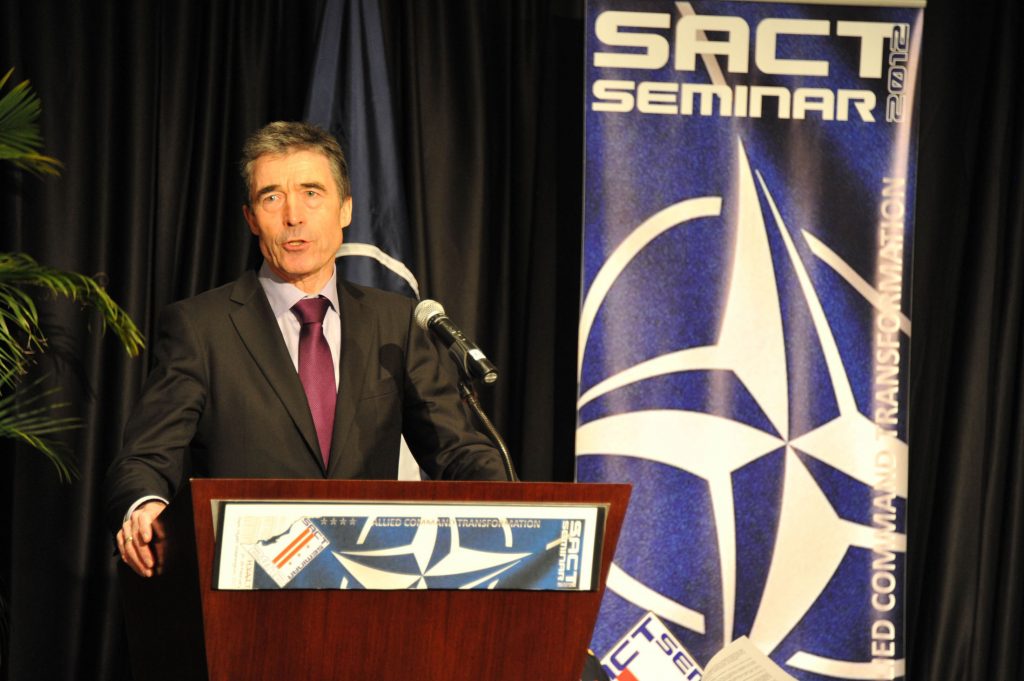
From Anders Fogh Rasmussen, NATO: In Chicago, I expect us to put Smart Defence firmly into practice through a package of multinational projects addressing key capability areas. But this needs to be reinforced, and complemented, with other elements. Let me give you four examples.
First, what I call the Connected Forces Initiative.
Smart Defence is about acquiring the necessary capabilities. Connectivity is about making these capabilities work together most effectively.
The Connected Forces Initiative mobilises all of NATO’s resources to strengthen the Allies’ ability to work together in a truly connected way. This is particularly important as we wind down our combat operations in Afghanistan at the end of 2014.
I see three areas to focus our efforts in the coming years: expanded education and training; increased exercises, especially with the NATO Response Force; and better use of technology.
We must expand our exercise schedule, with a particular focus on our NATO Response Force. This would allow us to draw maximum benefit from the recent United States’ decision to rotate units from an American-based Brigade Combat Team through Europe to participate in the NATO Response Force. Operationally, this would maintain and strengthen our transatlantic ability to work together. And politically, it would provide visible assurance to Allies.
Next, we must use our equipment more effectively together with other Allies. This does not mean buying the same equipment. But it means greater transatlantic defence cooperation, common industrial standards, and more wide-spread use of “adapters” that allow nations to connect up their different makes and generations of equipment.
By increasing equipment compatibility, and by promoting a ”plug and play” approach, we would also make it easier for Allies and partners to participate in future operations.
My second example is structures, which bring together our skills and capabilities.
We have agreed a new NATO Command Structure. We must now press on to make it a reality, so that we gain in flexibility and strength. And so we are better able to deal with future security challenges.
Third, the Lisbon Package of Critical Capabilities
At our Lisbon Summit we agreed on the Alliance’s most pressing capability needs. Chicago offers the opportunity to assess progress on our Lisbon List and where necessary, commit to further efforts to ensure all these key capabilities are delivered.
Finally, closer cooperation between NATO and industry. And closer cooperation within industry. NATO has an important role to play in promoting transatlantic defence industrial cooperation. And in providing advice to national policy makers.
Too often, individual nations simply do not procure quantities that are economically sustainable. By acting as match-maker; NATO could coordinate national requirements and delivery schedules so that we achieve the necessary economies of scale while sustaining defence industries. This is very much in tune with our Smart Defence mindset.
But we should also seek to encourage greater cooperation within industry. We need to see more industrial cooperation across the Atlantic. And unnecessary export control barriers that impede such cooperation need to be removed.
We also need to do more to encourage industry to adopt common standards and certification processes. A common certification approach will save many millions of euros – savings that can be reinvested into capability priorities without increasing defence spending in our nations. . . .
Chicago provides the perfect opportunity to draw all these elements together. And it’s an opportunity we must seize. So that NATO emerges lean, but strong and flexible – as we look to 2020, and beyond.
Excerpts from remarks by NATO Secretary General Anders Fogh Rasmussen at the Allied Command Transformation Seminar, Washington DC. (photo: NATO)
Image: NATO%203%202%2012%20SACT%20Rasmussen.jpg
